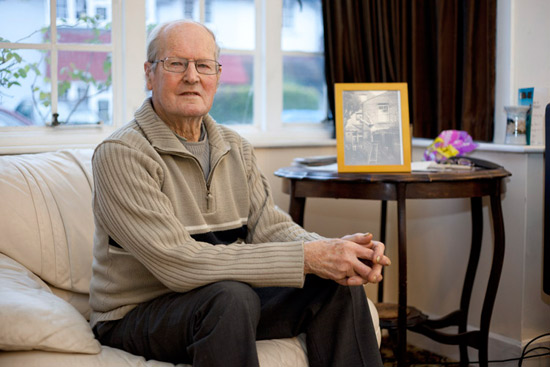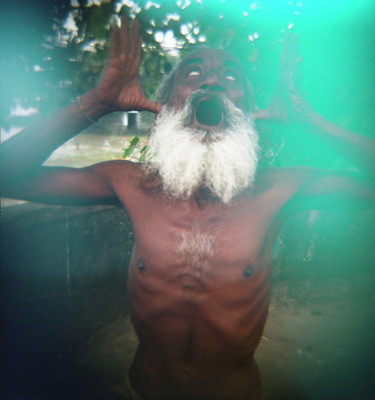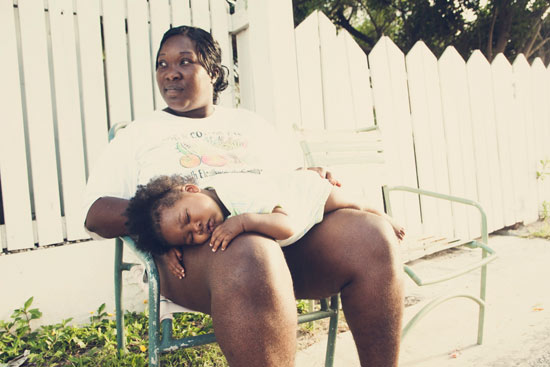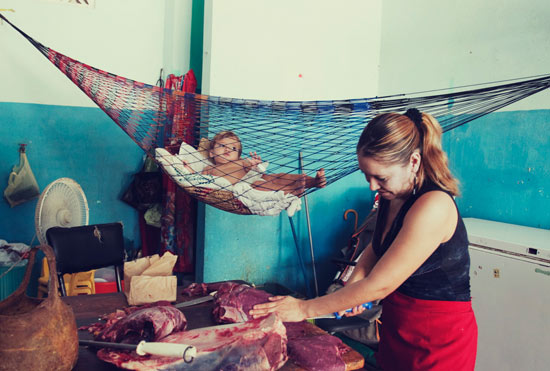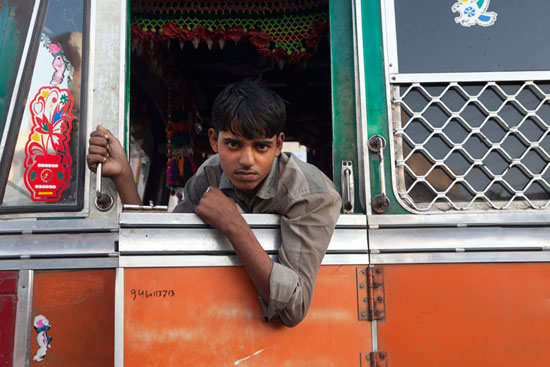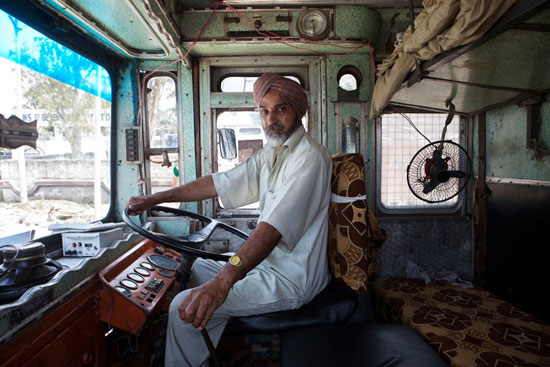
@cigaretteburns_ © Travis HodgesWhen
Travis Hodges joined
Twitter, he wanted to meet the people he was communicating with. "I photographed the most active person I followed and asked them to select the next subject from those they follow. Online social networking is changing the way people build relationships and I set out to illustrate one thread within this interconnected web."
The project is the manifestation of an enjoyable part of online networking - actively appreciating someone you're connected to, whom you really don't know. I was surprised that Travis and I have only
@JAMortram in common so I'm now following everyone in this story. With the publication of this feature, I hope to connect with more. I have had the pleasure of a cup of tea or two with people I've 'met' on Twitter - it's a great feeling to take these online relationships offline.
Follow Travis.
View the full screen magazine photo feature.
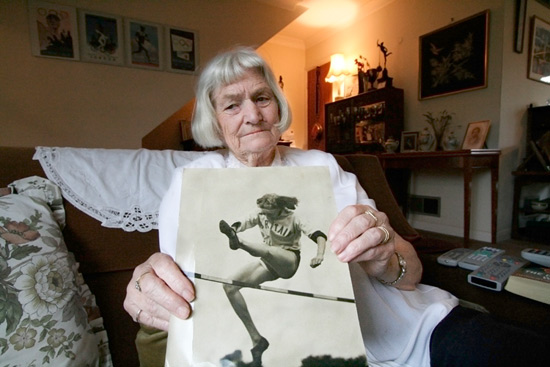
Dorothy Tyler (High jump) © Katherine Green
This year, London will host the Olympics for the first time since 1948. (Good luck with that. I'm grateful they are not being held here in NYC.) For the past 6 years, photographer
Katherine Green has been meeting and documenting the 1948 British Olympic Team.
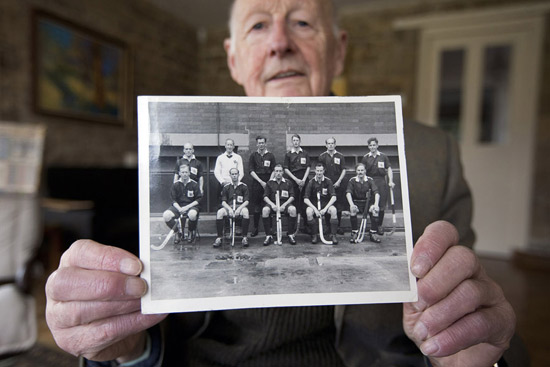
Katherine Green is a social documentary photographer, from East London, who studied postgraduate photography at Central Saint Martins College of Art & Design. Katherine's work often focuses on documenting communities through photography and oral history, exploring what community and a sense of belonging means to different people. Her work aims to highlight and celebrate members of the community who may otherwise go unseen.
Katherine says of this work: "At the same time as drawing parallels between 1948 and the 2012 Olympic Games, I do hope these portraits and oral histories go some way to demonstrate the knowledge and experience of a valuable generation of people who are often overlooked in our society. It has been a great privilege to spend time in the company of such interesting and modest people."
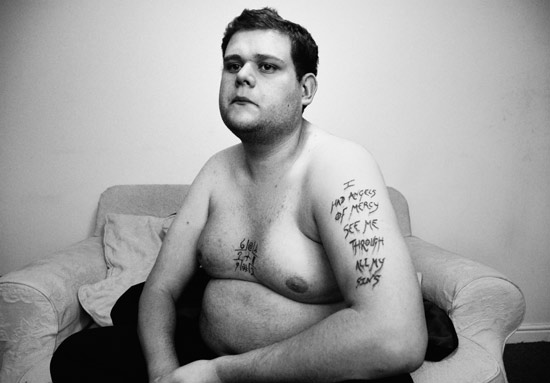
From Heidi & Ed: The fight for our children © J A Mortram
Jim Mortram is up-front about his own situation as a full-time caregiver, and in what spare time he has he photographs people in the margins, people in difficult circumstances - mentally or physically ill or just plain in-trouble. He gives them space to tell their stories, and the results are intimate and non-judgmental. Jim photographs warmly, with obvious compassion and investment in people's lives. "No matter who I shoot I want to shoot them forever!"
Mortram is a member of
Aletheia Photo collective. Read a short interview with him at
sevenbyfive or view his work with '
Independent Arts and Minds' over on the Beeb.
Visit his site for the full stories, be inspired - you will find yourself wanting to know how things turn out.
View the aCurator magazine full screen photography feature.Update: a piece focusing on Jim's series Simon: Living With Epilepsy over at
DuckRabbit's top blog.
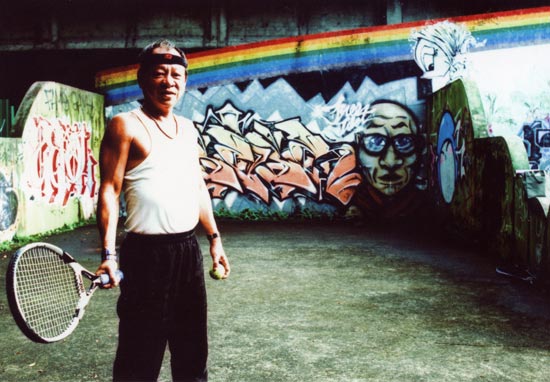
© Sean LotmanSean Lotman is a native of Los Angeles residing in Kyoto. "I am drawn to individuals who, lacking means and opportunity, nevertheless convey a poignant dignity."

"They say power is seductive but in my travels I've often been drawn
to the social underdog. It's easy to forget in our fast-paced,
high-tech lives, how many of us struggle to make ends meet. But such
striving does not go for naught, often making the man, transforming an
underdog into a talented, multifaceted individual... We're talking a
kind of person who can fix a bicycle chain, remove a carburetor, tune a
guitar, make a fire, and speak two or three languages despite dropping
out of school at the age of twelve. Many walk the fine line between
chaos and order on two dollars a day and for all that economic
repression, stay sane and start a family too. I've been awfully
fortunate to not only meet these hardy individuals but to take their
portraits as well."
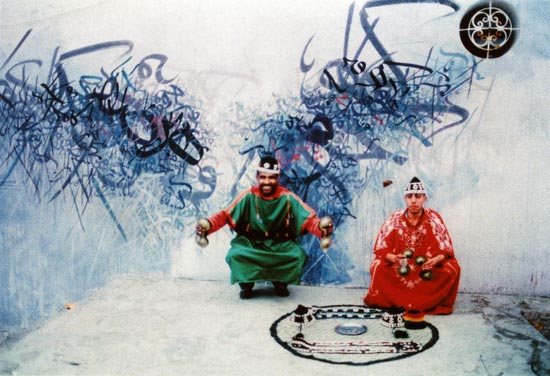
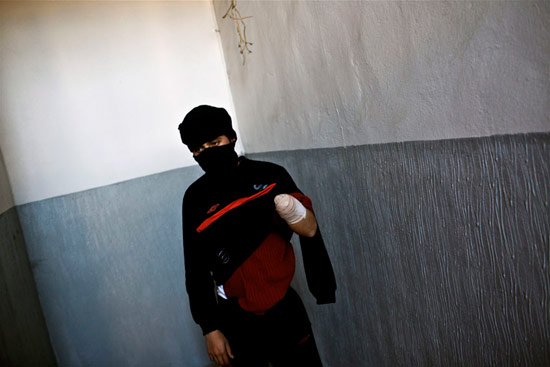
A wounded fighter in Lebanon © Carsten StormerReporter and photojournalist
Carsten Stormer sent in this story of Syrian refugees who have escaped to Lebanon.

A wounded Syrian refugee in a hospital in Tripoli, northern Lebanon. His right arm was severed in a mortar attack by the Syrian army. © Carsten Stormer"In this backwater of terror refugees keep trickling through the porous frontier, washed up like flotsam nobody wants. Once they are in the Lebanon, their suffering takes on a new form. Here there are none of the refugee camps found in Turkey. There are scarcely any organizations ready to provide the refugees with their basic requirements, blankets, warm clothing, milk for the children, medicines; there is a lack of all these."
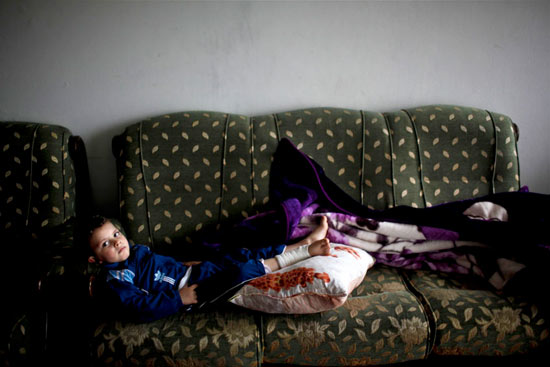 A wounded refugee boy in an apartment that is shared by three families. © Carsten Stormer
A wounded refugee boy in an apartment that is shared by three families. © Carsten Stormer"They are third class refugees. Their only hope for survival lies with sympathetic Lebanese people who are ready to share what little they have with them, or take them into their homes. The northern Lebanese city of Tripoli is the epicentre for Syrian refugees. In the town's hospitals lie the victims of the war. All of them tell of massacres of civilians, of snipers shooting indiscriminately at anyone who ventures out of doors, of bombardments of residential areas lasting for days, of demonstrators being executed in public, of dead bodies being left to rot in the streets as a deterrent. Most of the refugees ask to remain anonymous, as they fear the long arm of the Asad regime even in the Lebanon. It is said that on numerous occasions members of the opposition and other refugees have been picked up by Syrian or Lebanese secret agents and sent back to Syria."
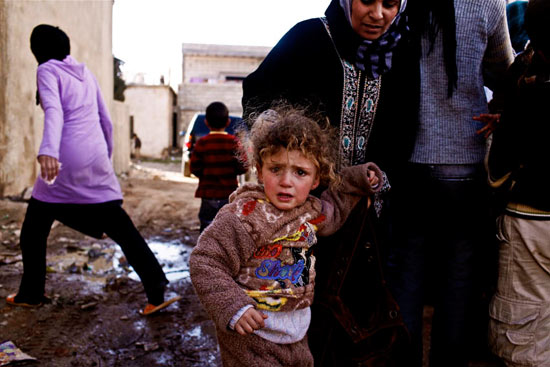
Refugees, picked up by a farmer, arrive "...in front of a dingy barracks. Helplessly they stand there like a herd of frightened sheep." © Carsten Stormer"The Lebanese government finds itself in a dilemma. On the one hand it is bound to Syria by treaty, which is why it officially discourages Syrian absconders from staying in the Lebanon, but on the other hand it has no wish to alienate its other Arab neighbours by sending refugees back to Syria. Anyone who does manage to enter the Lebanon from Syria is regarded as a visitor rather than a refugee, and is allowed six months' leave to remain on that basis. In this way Lebanon manages to salvage its humanitarian reputation and at the same time avoid a diplomatic rebuke. Syrian activists in the Lebanon estimate that around 20,000 refugees have already slipped into the country. And the number is growing by the day. Despite this the Lebanese Red Cross fails to see the need for any action. Every day hundreds of people queue at official entry points for stay visas. Others are smuggled past the landmines, checkposts and army patrols into Lebanon by activists or the Free Syrian Army. They know of only one direction to go: out."
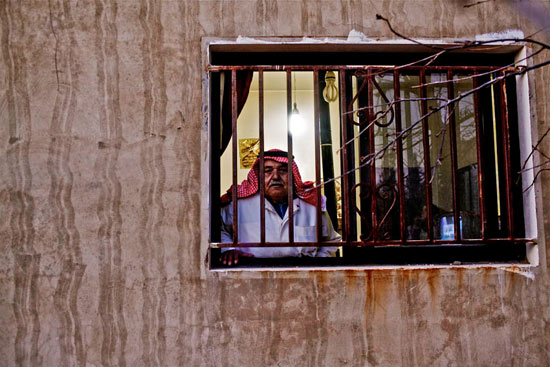
A Syrian refugee in no man's land between Syria and Lebanon. © Carsten Stormer"Surviving on the borders of legality, these refugees are put up in private flats arranged by workers in the activist network, or in schools, commercial premises or slums on the city outskirts. Often there are as many as thirty of them in a small space, several families to a flat. Accommodation is scarce, rents are rising astronomically. Seats are in short supply in the rescue ship of the Lebanon. And life revolves around the latest news and rumours. Have there been fresh battles or onslaughts? How are the family members getting on back in Syria, are they still alive at all? Life has turned into a timeless vacuum."
 Wounded Syrian refugees celebrate the anniversary of the revolution in a hospital in the city of Tripoli. © Carsten Stormer
Wounded Syrian refugees celebrate the anniversary of the revolution in a hospital in the city of Tripoli. © Carsten Stormer A wounded Syrian refugee in a hospital in Tripoli, northern Lebanon. © Carsten Stormer
A wounded Syrian refugee in a hospital in Tripoli, northern Lebanon. © Carsten Stormer
Many thanks to Carsten for this photo and text submission, and for his amazing work and dedication. Big respect to you out there in Manila!
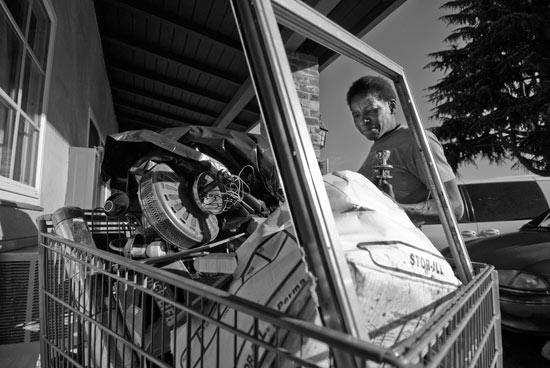 Denis Abdullah © Carlos A. Moreno
Denis Abdullah © Carlos A. Moreno Carlos A. Moreno is a "photojournalist who has a deep passion for documentary work and likes to share his vision about social change with socially conscious organizations that share his desire to make a difference with photographs." Carlos is based out of San Diego, California and lives near the U.S.-Mexican border.
"'Picking up the Pieces' is a story about how a family and its neighbors barely survive in one of America's richest technological hubs, the Silicon Valley Area, home to the likes of Cisco and Google, and how even in such a place of success can working professionals like the Abdullahs still not make it and fall through the cracks.
The Abdullahs survive day-to-day, starting early in the morning recycling and tearing apart computer parts, copper wire, and whatever they can find to make ends meet so they can stay in the hotel they've been inhabiting for two years now and feed their son, Shadeed. With much work and sacrifice they sometimes manage to gain enough for the day's rent and for tools to make recycling a "business," as Denise and Mahir Abdullah see it. Their lives are far and apart from what they use to be years ago, when both had lucrative jobs, he as an electrical engineer at Intel Corp and she as a childcare facilitator.
The 2000 dot-com bubble destroyed their chances of getting ahead and with Mahir's skills now outdated and with a current and long-lasting economic slump neither has a chance of getting back on their feet. Though the odds seem stacked against them, they still persevere and even after facing such hurdles, help their neighbor, Tasha, a single mother who has a severe case of fibromyalgia and who is also struggling financially.
Both families face making rent and not having the needed resources to break the cycle of poverty; they are hoping with their determination and ingenuity that they will not end up homeless, but can slowly pick up the pieces of their lives one part at a time." - Carlos A. Moreno
View the full screen magazine photography feature.
Follow Carlos on Twitter.
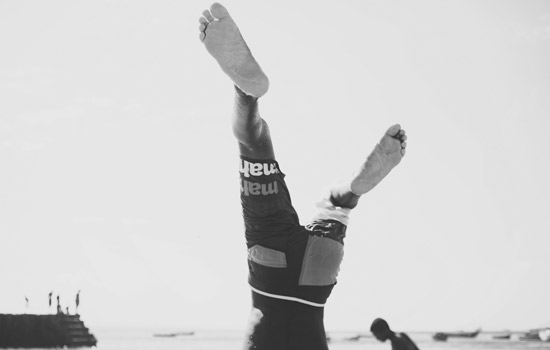
© Abby RossDelightful youngster
Abby Ross, seen here in
aCurator magazine last year, has not stopped growing; currently "she has been logging some hours in Africa... Congo and Somalia."
I'm very fond of this photographer, of her style and determination.
Check her out.
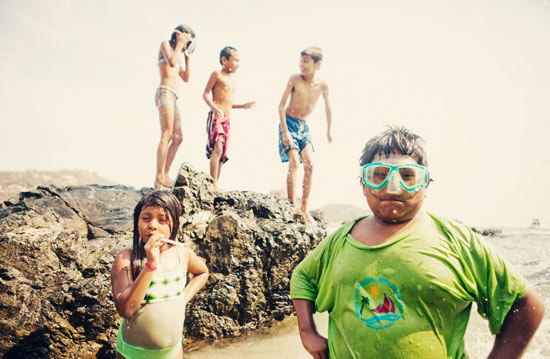
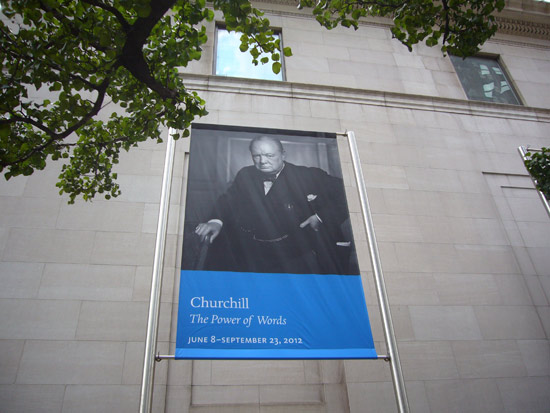
A new exhibition opens today at the Morgan Library in midtown Manhattan. 'Churchill: The Power Of Words' includes "...Victorian childhood letters to his parents, to Cold War correspondence with President Eisenhower, and featuring some of his most famous wartime oratory." We are proud that the Morgan and their associates at the Churchill Archives in Britain selected Karsh's most famous, most reproduced photograph of the great man, to represent this show. In conjunction with the exhibition, the Morgan and the Churchill Archives Centre have also launched the
Discover Churchill website.
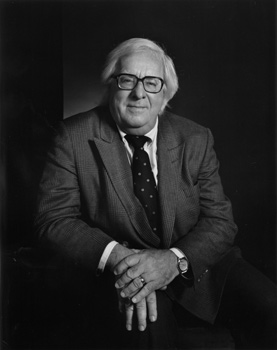
Ray Bradbury died today at the ripe old age of 91. Here he is photographed by
Yousuf Karsh in 1990 when he was still a whippersnapper.
Ray Bradbury, 1990 © Yousuf Karsh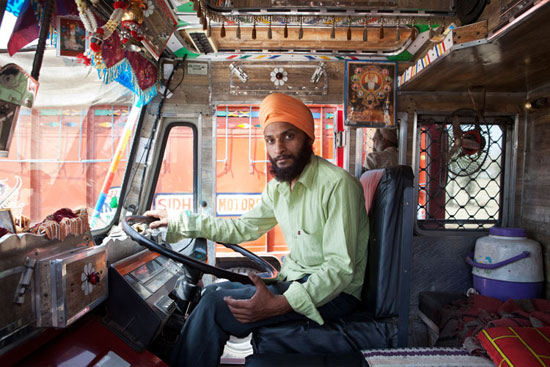
© Dan EcksteinHorn please! I love
Dan Eckstein's project on long-distance drivers in India. Dan covered some 2500 km - it was worth it!
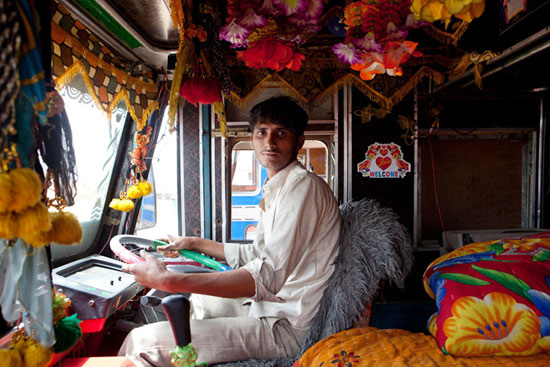
"'Horn Please' is the mantra of the Indian highway and some version of the sentiment is written on the back of practically every truck on the road. In a place where lanes are a mere suggestion, side-view mirrors are seldom used and modes of transport range from horse-drawn carts to eighteen-wheel trucks, the ever-present horn is an essential part of driving etiquette."

"Along the highway, one unmistakable feature is the brightly decorated trucks that ply the country's roads. The men who drive these trucks spend long hours on the road and can be away from their families for weeks at a time so their trucks act as a second home and they take great pride in them. The interior and exterior of the trucks are colorfully decorated with paintings, stickers, garlands, tassels and shrines, which are not only a unique form of folk art but also an expression of individualism."
All images © Dan Eckstein





